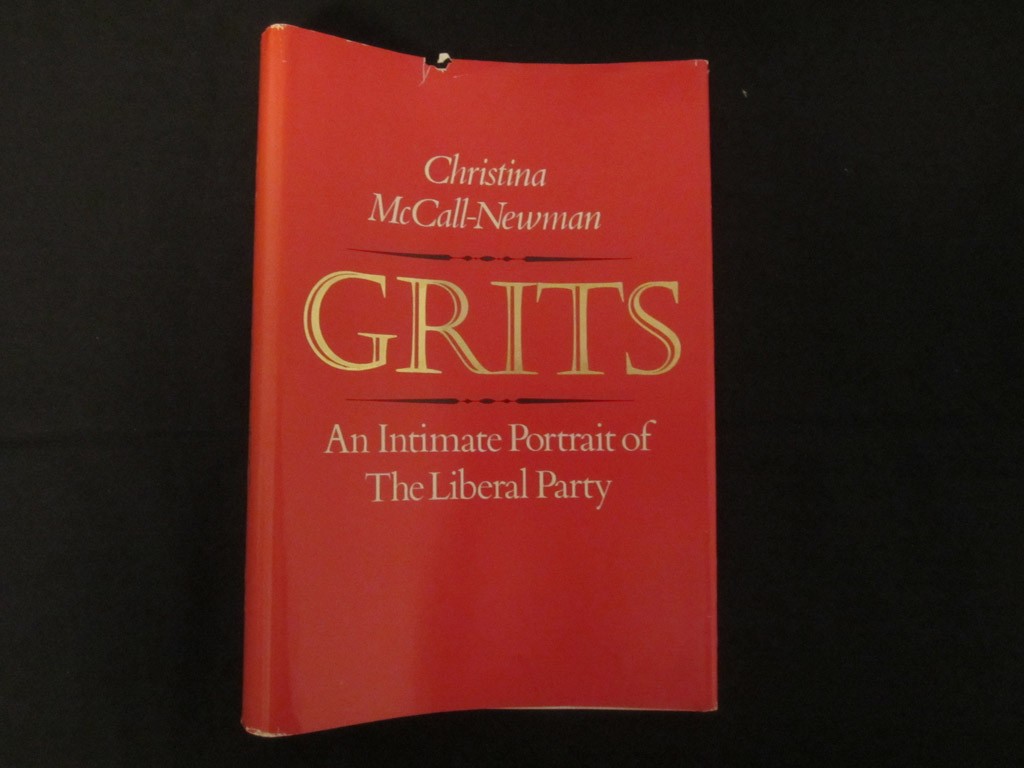
McCall-Newman, Christina. Grits An Intimate Portrait of the Liberal Party. 1982 Macmillan of Canada, First Edition, Dust Jacket. It is signed by the author.
This book is a special kind of book. I say this because of the way many who would pick it up, choose to read it. It’s an “insiders” book which means that many who read it, don’t start at the beginning and read it through. Instead, they start at the index to see if their own name appears. Insiders, though they stay in the back rooms of politics, do want recognition. If you considered yourself to be anybody in the Liberal Party of Canada in the 1960’s or 1970’s, you would start with the index.
The book begins with a background of the bureaucratic growth of the Government of Canada, which, given the dominance of the Liberal party, also meant the growth of a Liberal bureaucracy. It does this by looking at the years from 1935-1957, years which Canada was governed by two Liberal Prime Ministers, William Lyon Mackenzie King and Louis St. Laurent.
The book really takes off with the arrival of Lester Pearson to the leadership of the party. The party was decimated in the 1958 election. This allowed new people to step in and change the direction of the party. This is exactly what happened. A primary focus is placed upon Walter Gordon and his followers within the party. This period reflects a move to the left of the political spectrum for the party. In the end, the Pearson-Gordon relationship falls apart.
Under the party’s new leader, Pierre Trudeau, a new bureaucracy emerges…The Office of the Prime Minister. It is here that men such as James Coutts and Keith Davey flourish. The imperial premiership was born.
If you are a fan of process books, then this book is a great read. In fact, if you enjoy any aspect of the machinations of the back rooms of Canadian politics, you will not be disappointed. Where you might find it falling short would be if you’re looking for an actual history of the party. It goes into great detail on specific individuals within the governing bureaucracy, but does’t really reveal much of the overall history beyond the specific individuals under focus. In the author’s defense, I do not believe that this was the goal. Overall, it delivers exactly what the full title promises…this is a true intimate portrait of the Liberal Party of Canada in the 1960’s and 1970’s.
